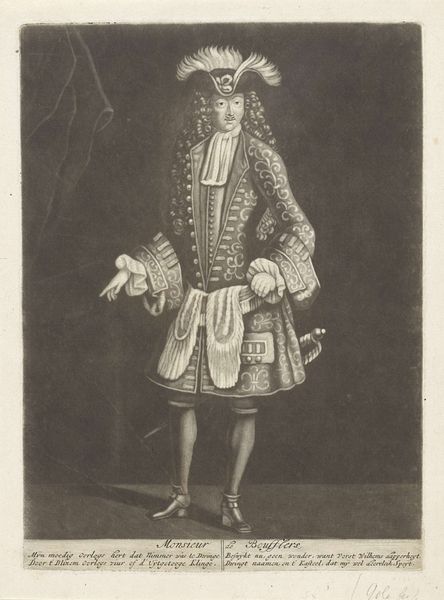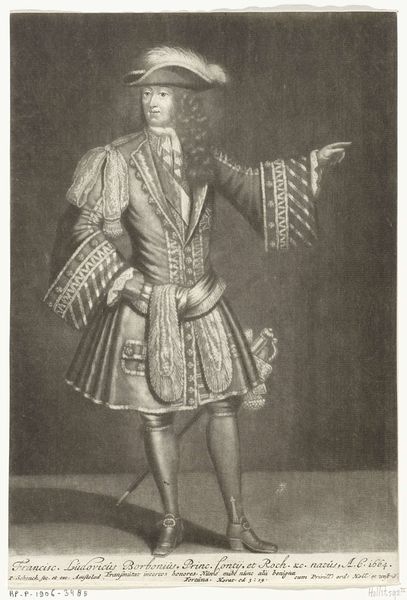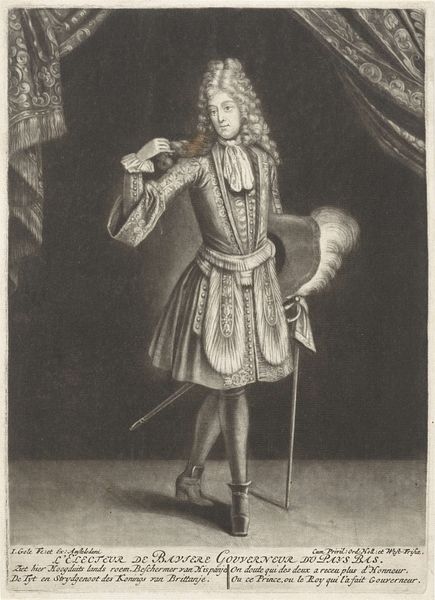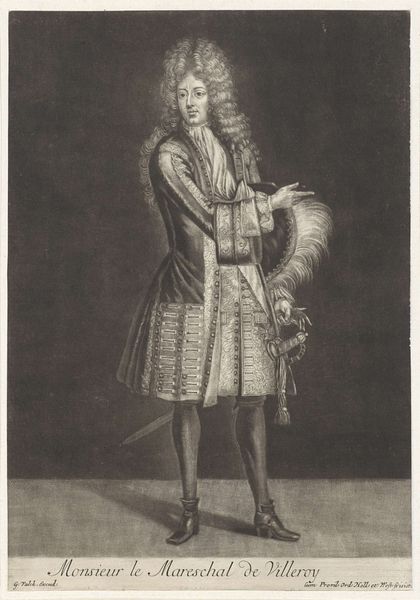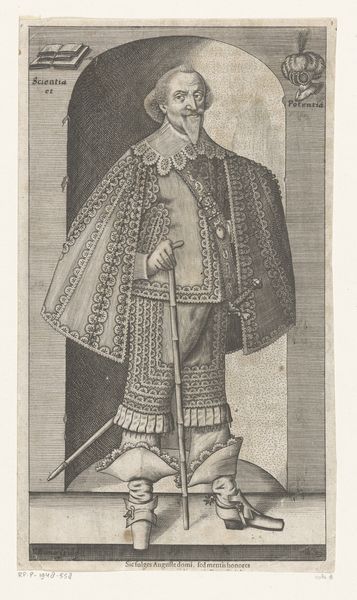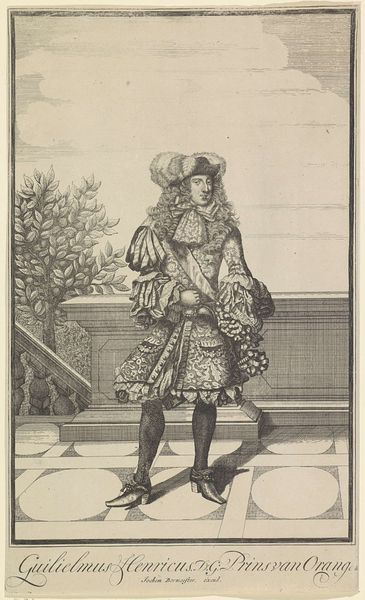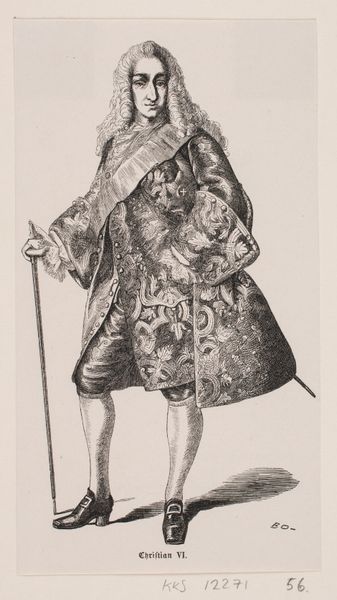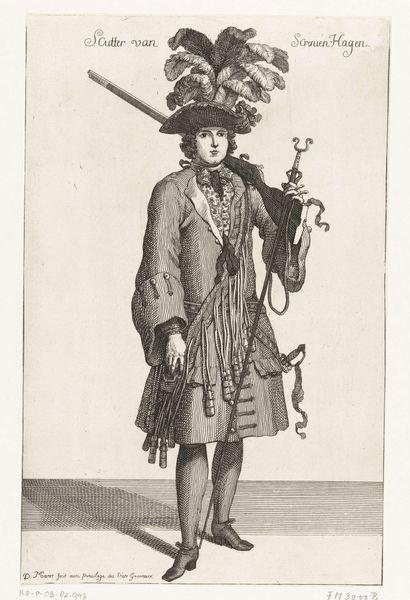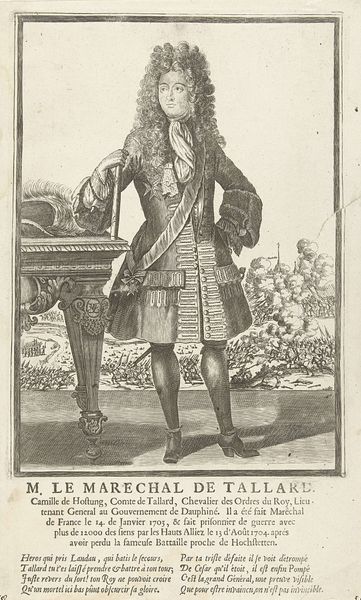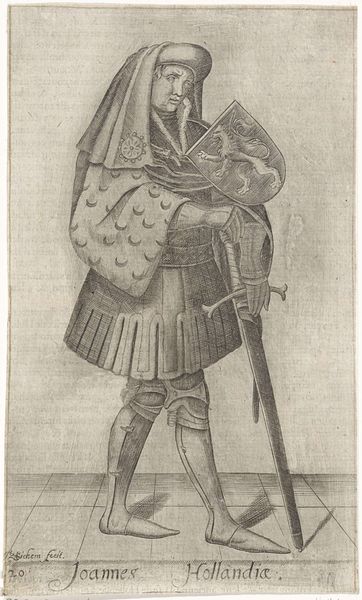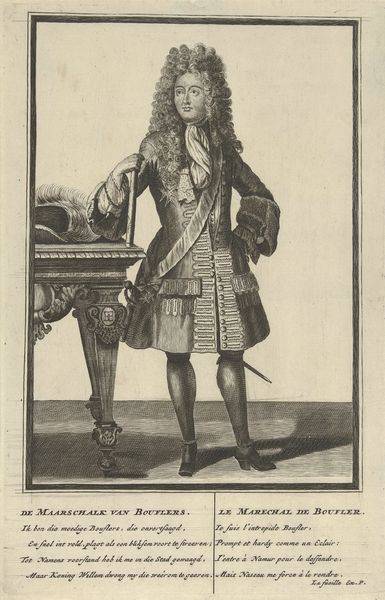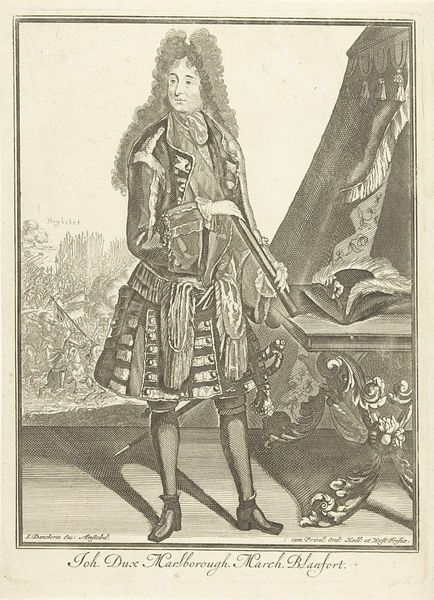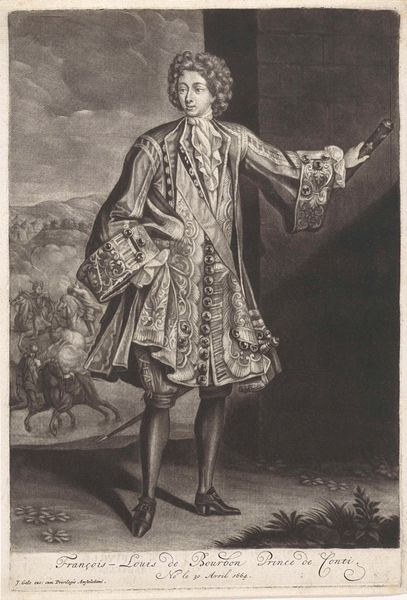
engraving
#
portrait
#
baroque
#
old engraving style
#
19th century
#
engraving
Dimensions: height 255 mm, width 173 mm
Copyright: Rijks Museum: Open Domain
Editor: This is "Portrait of Willem Hyacinth, Count of Nassau-Siegen", an engraving by Pieter Schenk, made sometime between 1685 and 1711. It’s quite formal, the Count seems rather serious. How do you interpret this work, looking at it from your perspective? Curator: Well, seeing as it's a portrait destined, presumably, for public view, we have to consider the performative aspects of it. Think about the target audience and the political climate of the period. Editor: Right, I was thinking about that. What was the message that they were trying to convey? Curator: Precisely! Willem is meticulously styled in fashionable garb; every element screams wealth, authority, and connection. Do you see any signifiers of power at play in this portrait? Editor: Definitely. The cane, the hat, and the elaborate clothing all emphasize his status, right? Is it typical for portraits of this period? Curator: It’s a performance of status but also a reflection of artistic patronage. Portraits such as this one were meant to visually establish and reinforce social hierarchies. This portrait isn’t simply about individual likeness, it's about constructing and broadcasting power. Notice that inscription on the bottom, it establishes a link between names, families, and even regions of leadership, solidifying social order. Editor: That’s fascinating! It's much more than just a picture, it's like a statement. Curator: Exactly! It encapsulates the complex interplay between art, power, and social messaging. It also helps us understand how representations like this solidify social order and justify positions of power. Editor: I’ll never see a portrait the same way again! It's amazing how much context shapes our understanding.
Comments
No comments
Be the first to comment and join the conversation on the ultimate creative platform.
